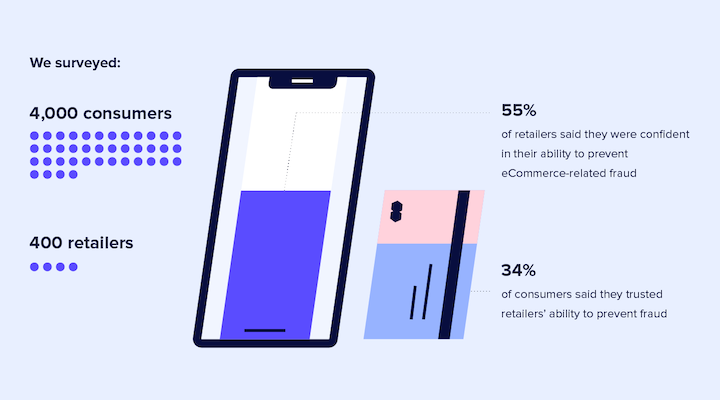In e-commerce, growth is always tailed by fraud. This is true also for the period of accelerated global digital growth set forth by the Covid-19 pandemic in early 2020.
Global e-commerce sales experienced growth of 28 per cent last year to approximately $4.3 trillion, and are expected to reach $6.4 trillion by 2024. But with it came an increase in fraud attempts recorded by 72 per cent of online merchants worldwide, according to a comprehensive recent survey by Riskified, with over a third blaming fraud for losses of 5-10 per cent of their revenue last year.
Earlier this year, Riskified commissioned a survey of 4000 online consumers and 400 merchants in the US, UK, France, and Germany, with the purpose of gauging global perceptions and attitudes towards online safety and fraud. The findings, published earlier this month, reveal a dramatic difference between how merchants and consumers view the threat of fraud and who they blame when it occurs.
As growing numbers of customers have fallen victim to fraud in the past year, their confidence in merchants is eroding. According to the survey, as many as one in five global consumers have experienced online shopping fraud last year, and up to 40 per cent of them blame the merchant – rather than the fraudster. Customers are so unsettled by having their data or credit card details compromised that two in three respondents said they wouldn’t shop with the merchant again.

Here is where customers and merchants differ: Over 55 per cent of all merchants surveyed said they were confident in their ability to prevent e-commerce fraud, and the majority of merchants said they believe they have all the tools necessary to keep fraud at bay.
Customers, however, don’t seem to share this confidence. In the US, 71 per cent of consumers think retailers could have done more to prevent them from becoming victims of online shopping fraud. In the UK, only 34 per cent of shoppers said they trust merchants to protect them against online fraud, compared to 82 per cent of UK merchants who believe they are doing “everything they can” to stop online fraud.
The gap between retailers’ high level of confidence and consumers’ mistrust suggests that many merchants are suffering a confidence crisis. It is important to note that many merchants are very aware of what fraud costs their businesses. About a third of merchants reported that fraud significantly hurts their profitability and that it erodes their customers’ trust and overall brand perception. Still, there seems to be a misplaced confidence in existing fraud prevention measures.
For merchants, there is another concern. Many ranked revenue loss caused by fraud-prevention methods as their “biggest problem.” In the UK and France, for example, merchants ranked 3D Secure and other two-factor authentication protocols as having the largest negative impact on revenue (with US and German merchants ranking it second most harmful). While two-factor authentication does stop a fair number of fraudulent transactions, it adds friction that can drive away valuable customers. Many merchants believe that they are forced to make a difficult tradeoff, sacrificing customer experience and growth for security or vice versa. But fraud and friction are not a given. Technological innovations can help merchants balance the necessity of preventing fraud with that of minimizing friction and providing a smooth path to purchase.
While the confidence disconnect is a worldwide problem for e-commerce merchants, attitudes vary from country to country. The full report illustrates regional perceptions of fraud and fraud prevention and provides valuable insight for global e-commerce operations, or for merchants contemplating global expansion. Download the full copy here.






